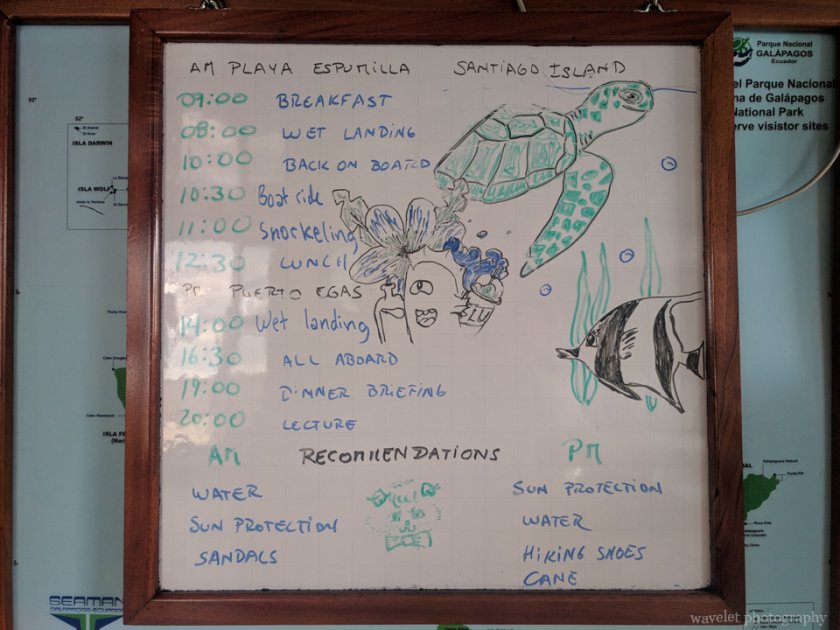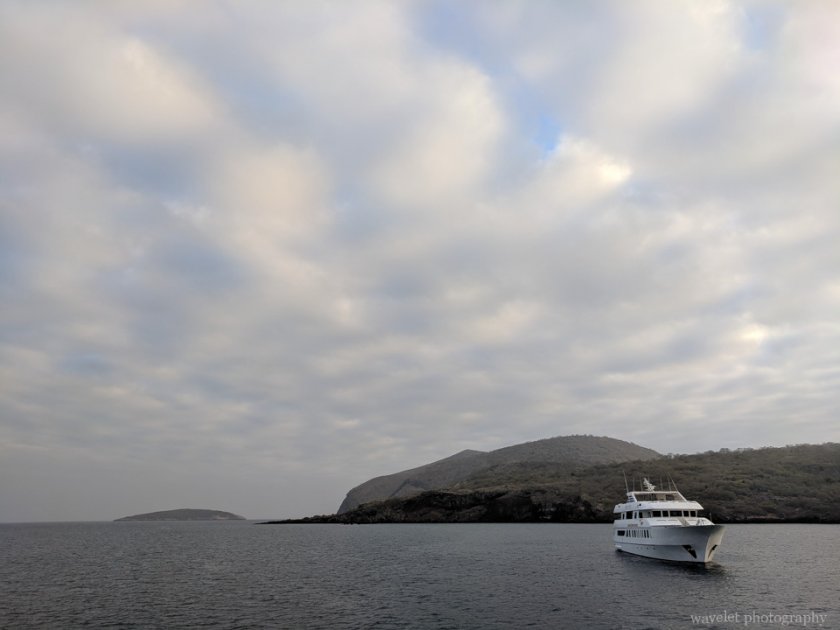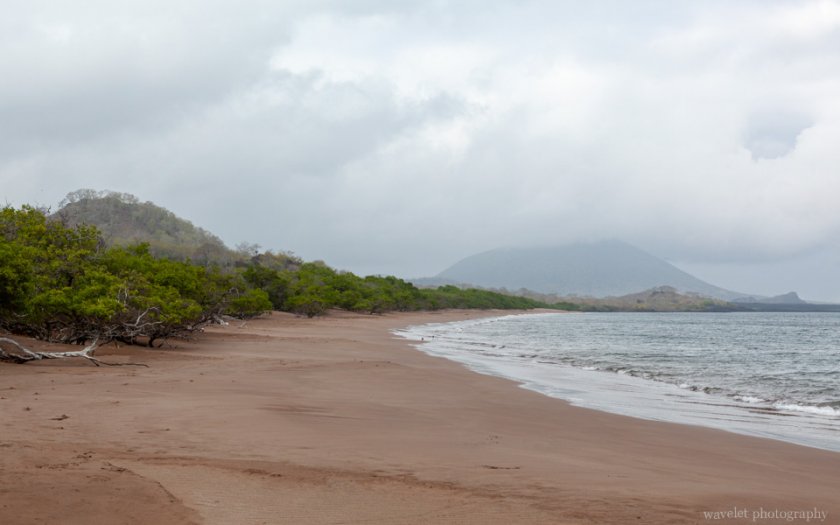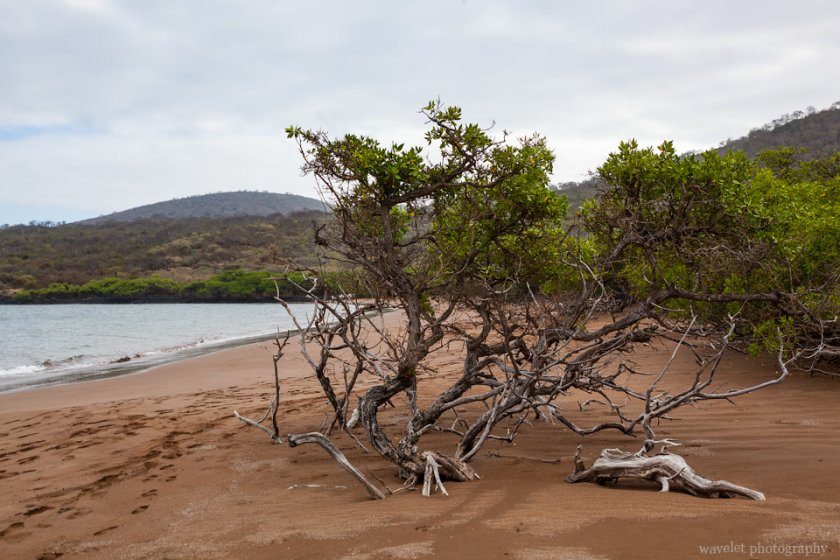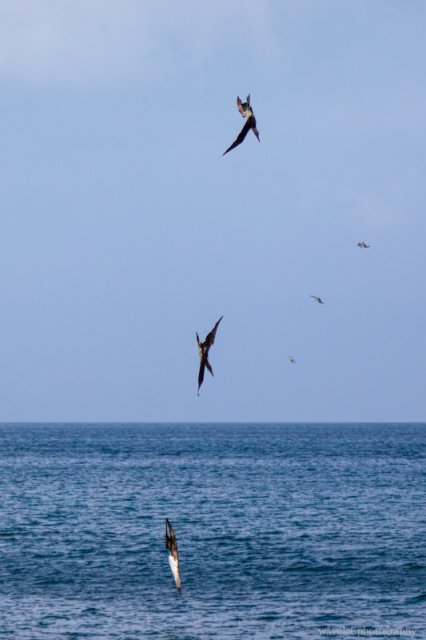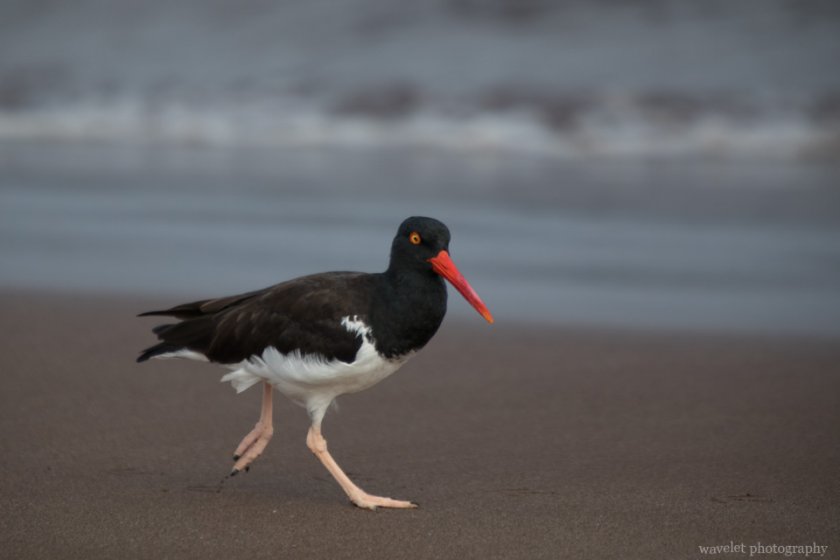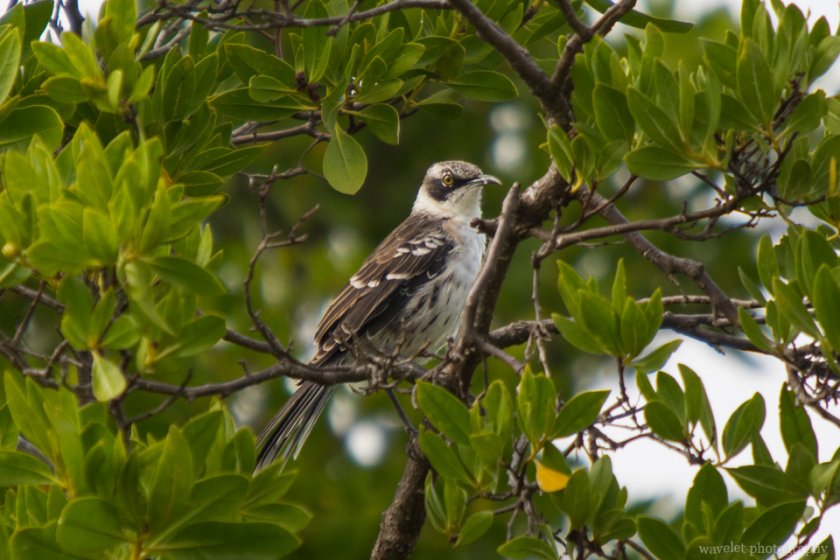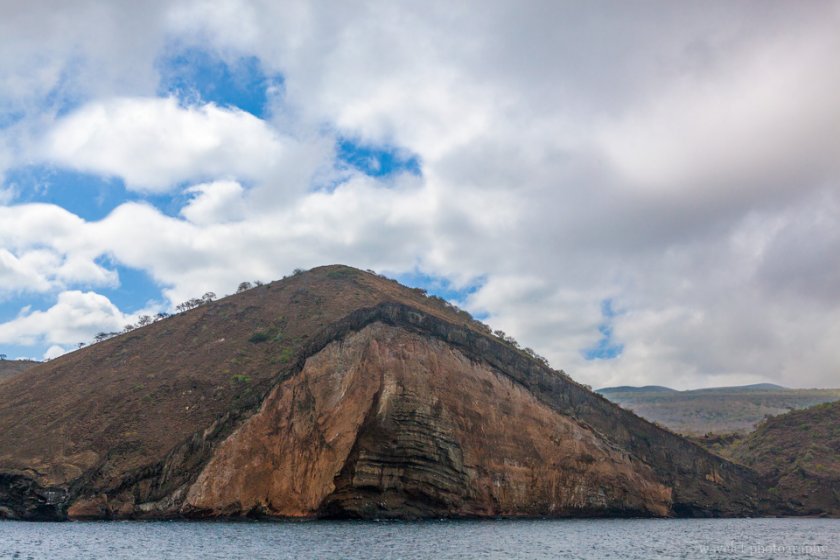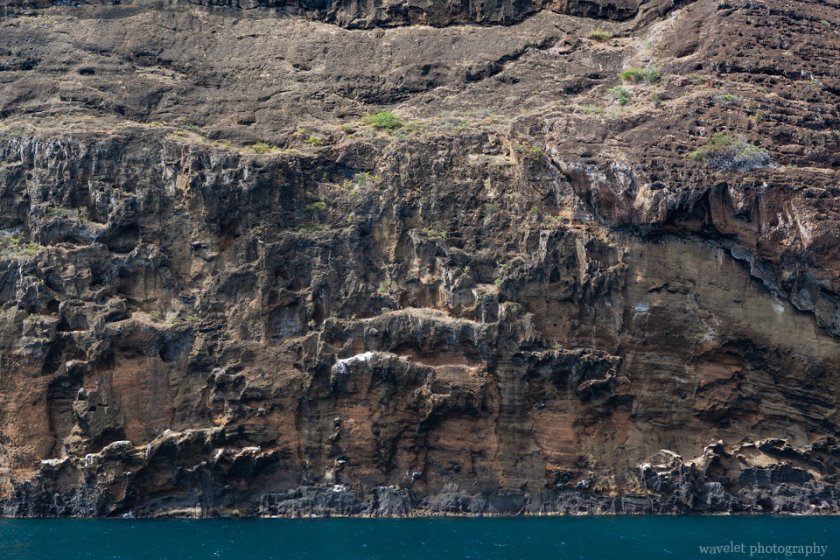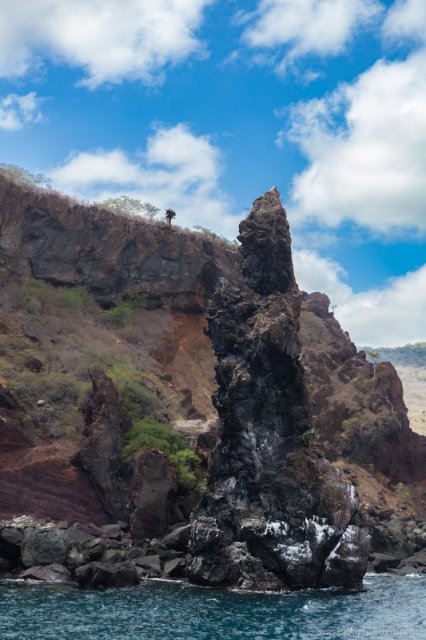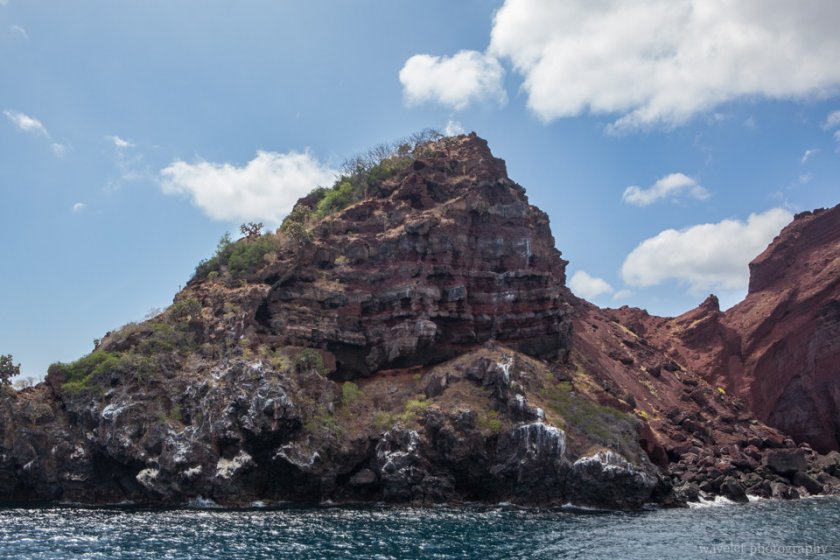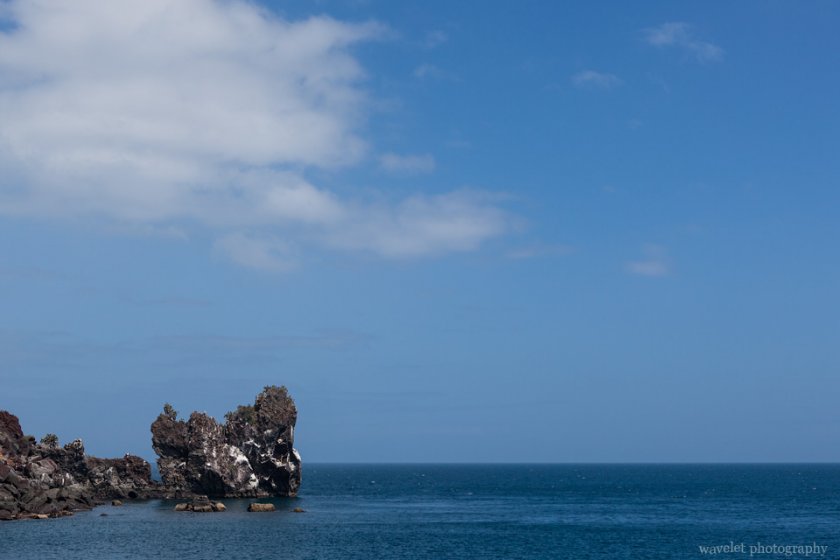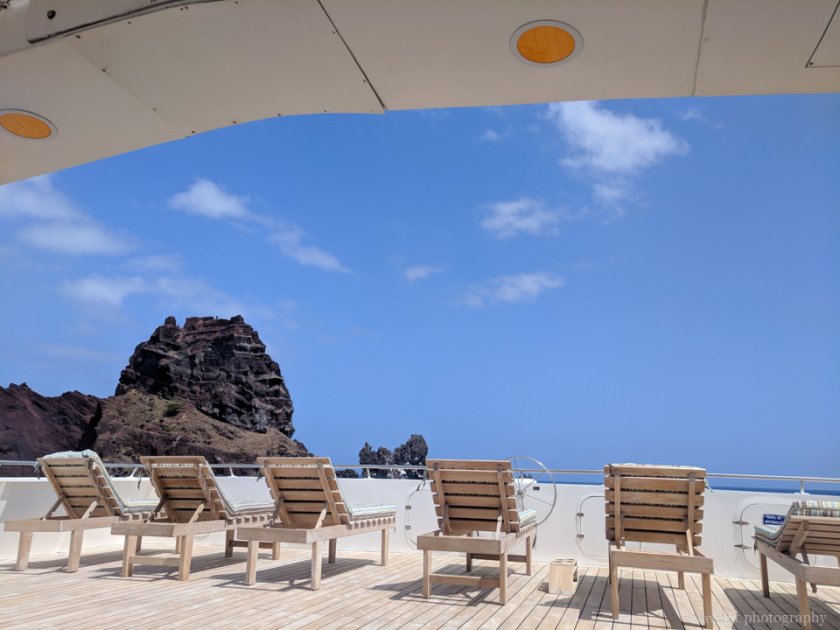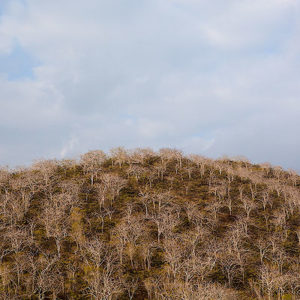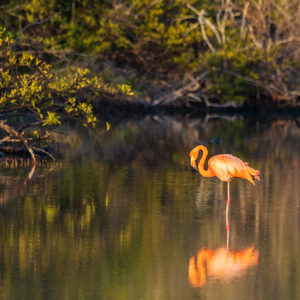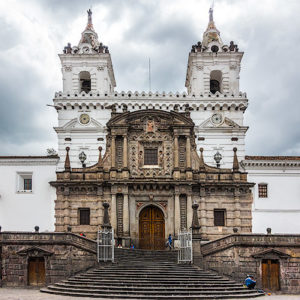2018.7.3
After a bumpy night, our boat was moored in the early morning off James Bay, Santiago Island. Santiago Island is located northwest of Santa Cruz Island and has been a supply location for whaling ships since the early nineteenth century. Roads and buildings were even built near James Bay in the early twentieth century to extract the salt from the volcano. Introduced species brought by humans have caused great damage to the island’s ecosystem. According to Darwin’s diary, the island was home to a large population of land iguanas, which are now extinct on San Diego Island. Beginning in the 1980s, the project to remove introduced animals from the island was carried out. By the turn of the century, the island was declared pigs, sheep and donkeys free and the island’s ecosystem began to recover. In contrast, some introduced plants began to proliferate because of the disappearance of these animals. They are more difficult to eradicate than the larger animals, so their spread has to be controlled.
The northern landing site of James Bay is at Espumilla Beach, a sandy beach surrounded by mangroves. This is a Galapagos sea turtle nesting site. A few days before we arrived, a turtle had laid eggs in the woods. The guides blocked the path to the forest with tree trunks, telling later visitors not to pass, so we had to walk along the beach.
A number of seabirds can be seen on the beach, and a flock of blue-footed boobies are hunting for food. The blue-footed boobies waddle around on land and make funny moves, but they have a jaw-dropping skill. When they find prey in the water, they suddenly turn their bodies in the air and dive for the water. When they get close to the surface, their bodies almost form a line, and they hit the water like a bolt of lightning. Sometimes nearly a hundred blue-footed boobies are hovering over the water, and when someone calls, all the blue-footed boobies dive almost at the same time. The view is really a wonder of nature.
Since the blue-footed booby preys on fish by diving headlong into the water, their nostrils are closed and they need to breathe through their mouths. Blue-footed boobies have special air sacs in their skulls, and their necks are much thicker than other birds. These body structures protect their heads and necks from damage when they dive into the water at speeds approaching 100 kilometers per hour.
American Oystercatchers normally walk on beaches and riverbanks, feeding on shellfish and oysters. Their beaks are long and sharp and can pry open shells. Oystercatchers are fast runners and long fliers. I wonder if it’s a lot of trouble for a bird that’s not that big to move with such a long bill. But think about Hummingbirds, who has the longest beak compared to their body, they are actually the most aerobatic flyers.
Cabo Cowan is a tuff cone located on the northern rim of James Bay. Years of weathering have eroded one side of the mountain into a cliff, exposing the sedimentary strata inside the mountain. Seabirds have not missed the opportunity to build nests on the layers of rock walls. Lava Gulls and blue-footed boobies can be seen perched on top from a distance.
Further north from the crater is the small island called Isla Albany, which is actually a few rocks jutting out of the water from Santiago Island. Isla Albany is a great place to snorkel, because of its complex rock formations and attached coral that provide an ideal place for marine life.
Instead of going snorkeling with the others, I lay on a deck chair at the top of the boat and read a book. Traveling on a cruise is a great opportunity to read, with a ton of time and not much to do, and often books that haven’t made much progress in months can be completed in one trip. This time, I brought “Guns, Germs, and Steel”, a book that has been recommended by many and is indeed a masterpiece. While telling the story of the grand history of mankind, Jared Diamond supports his theories with great amount of details and discoveries in geography and archaeology, reasoning and deriving theories step by step. It is an inspiring and rewarding experience.
Lying alone on the top deck, the only thing I could see are a few rocks on the calm sea, the only sound I could hear is the creaking as the boat swaying around with the breeze. It was as if I was the only one left in the world.
